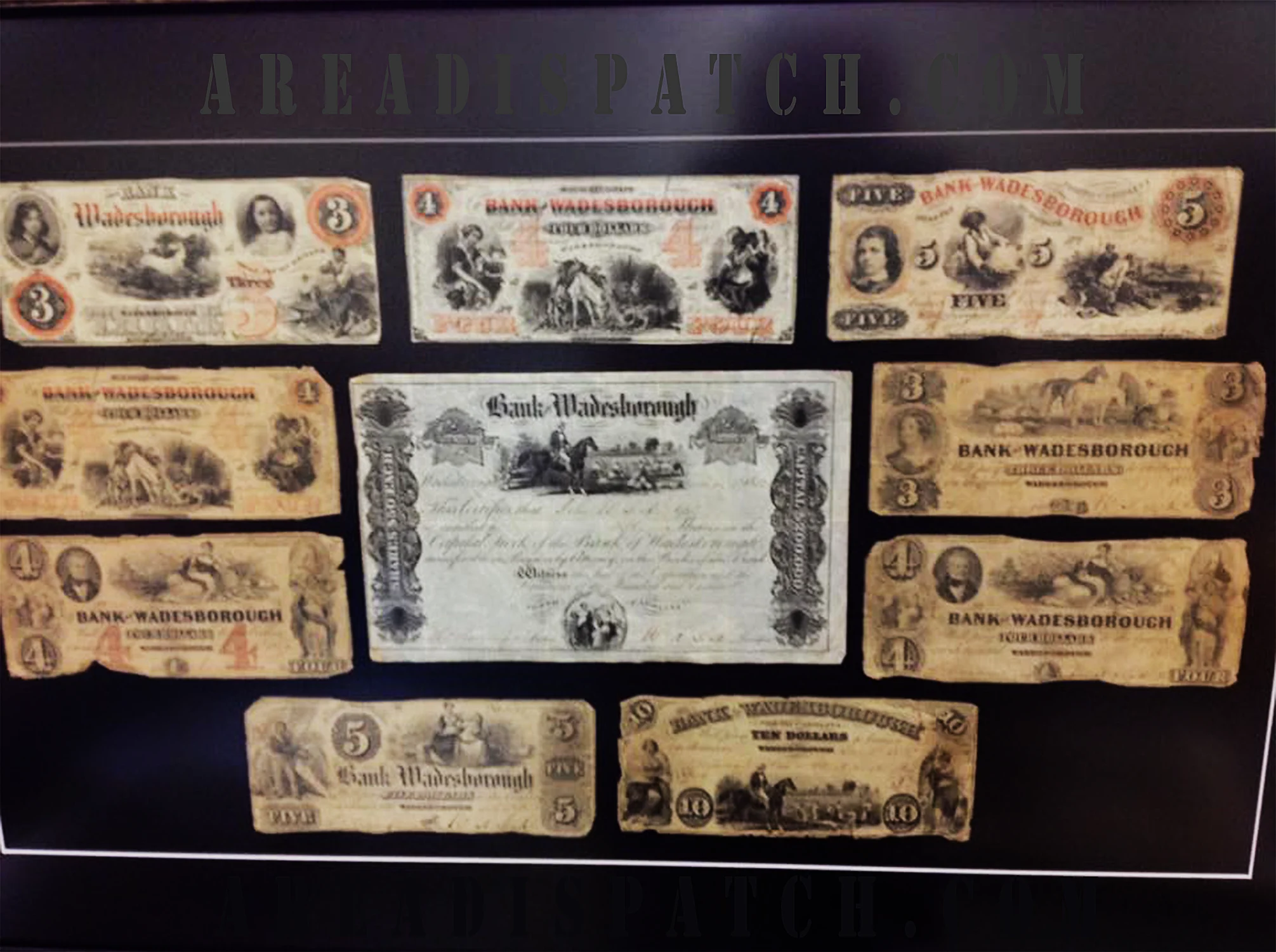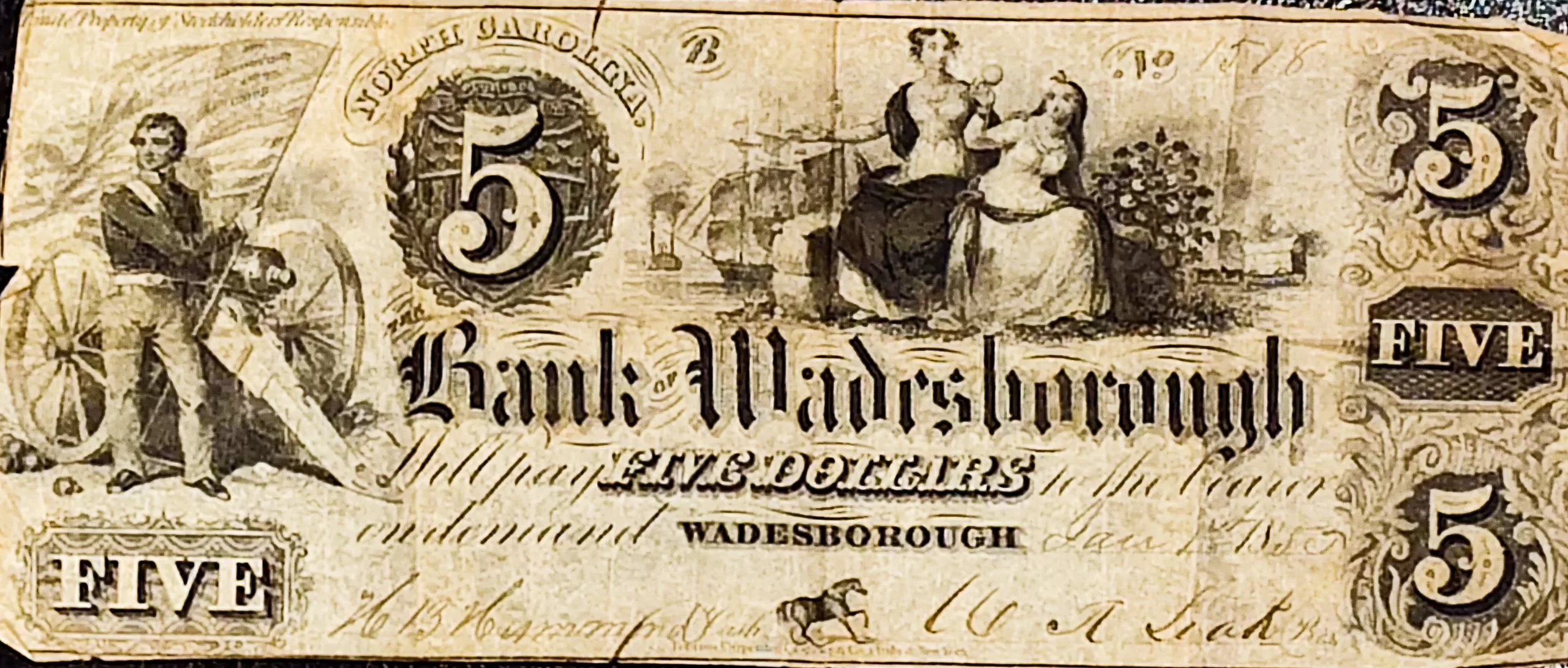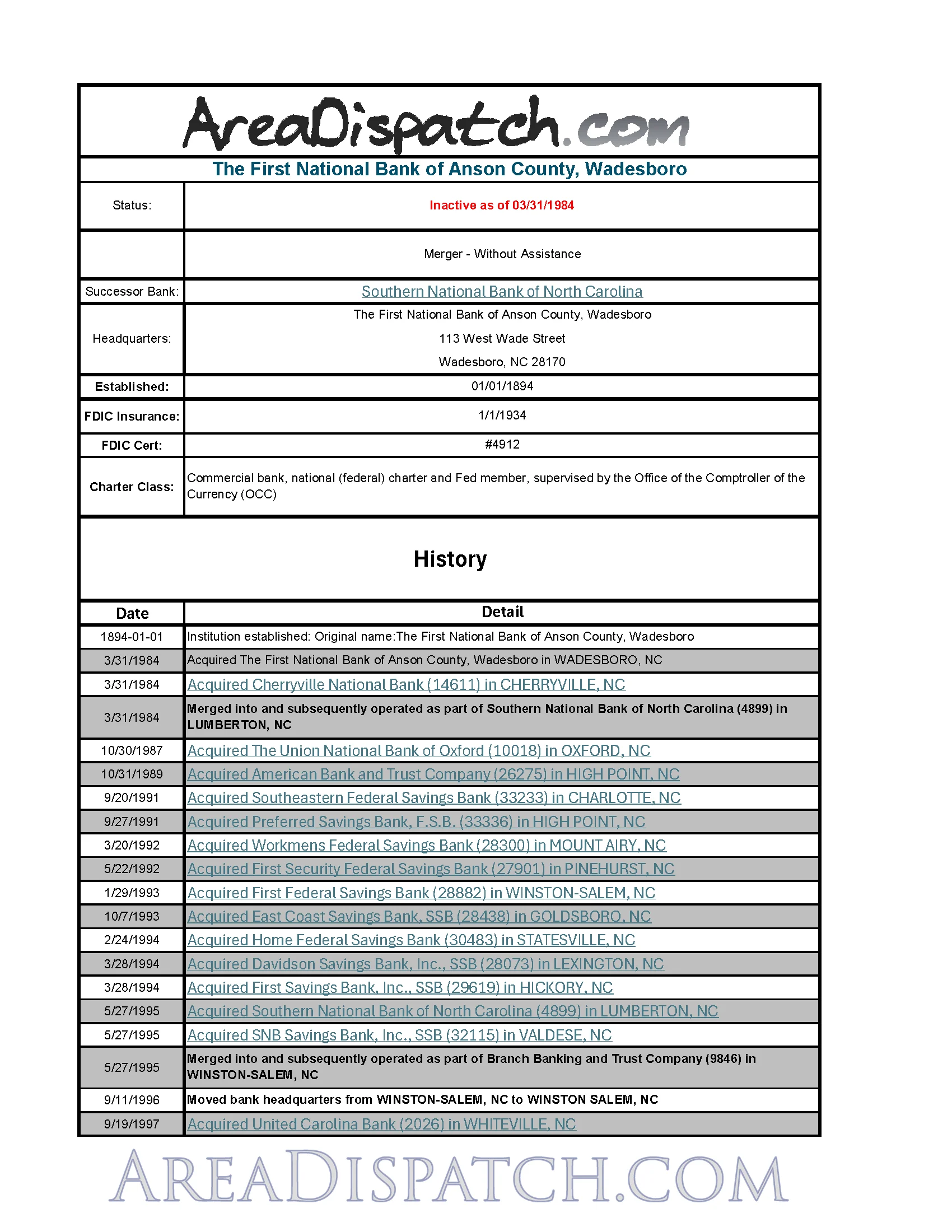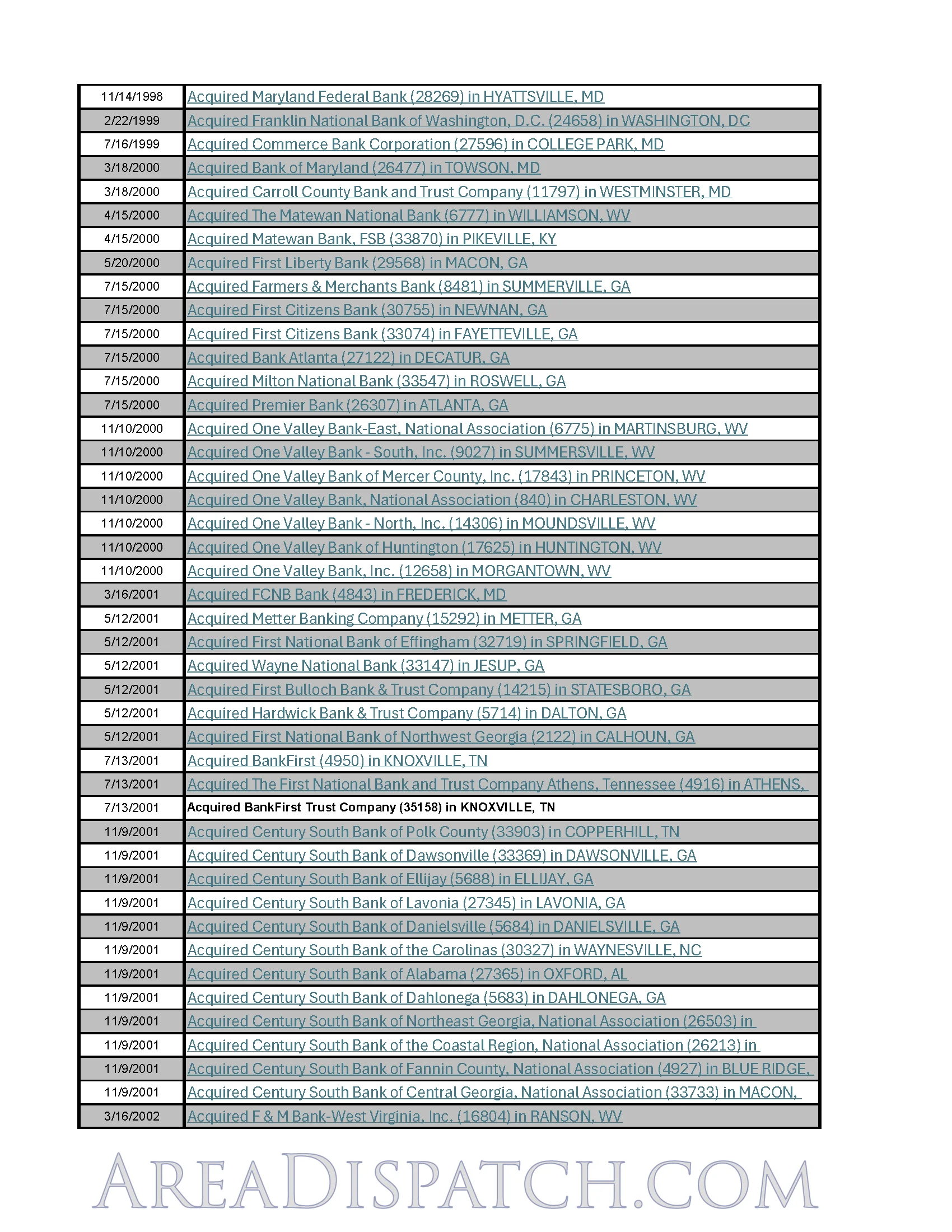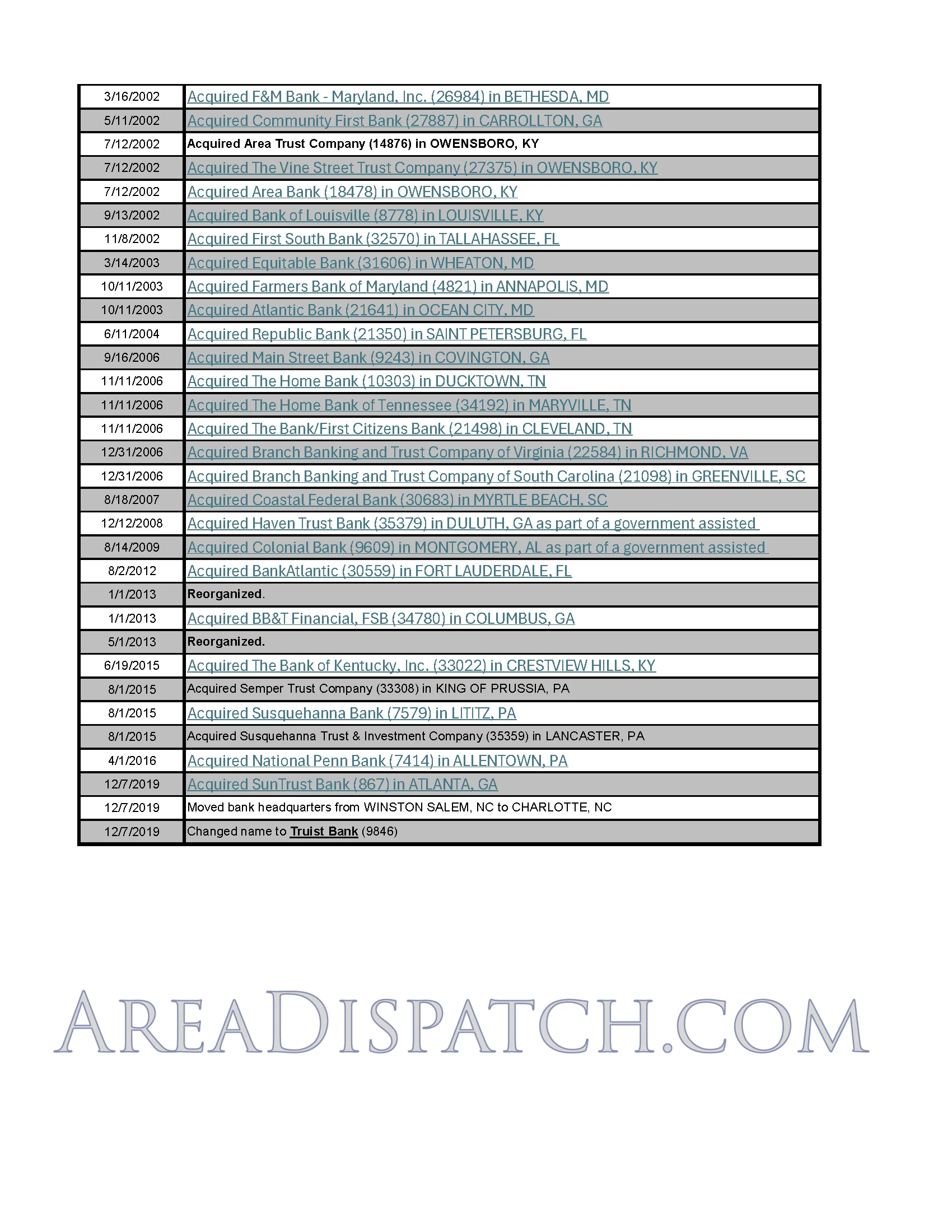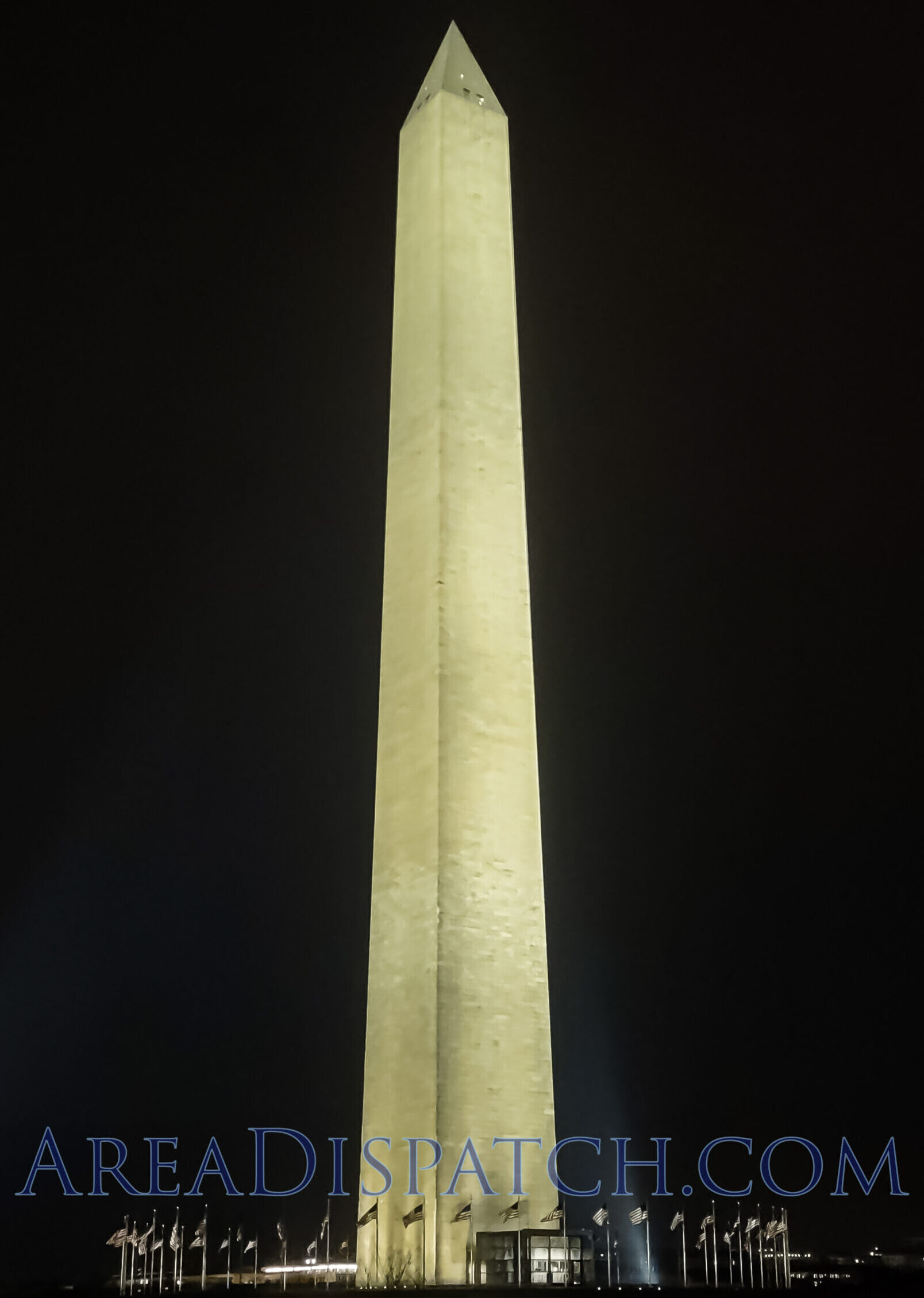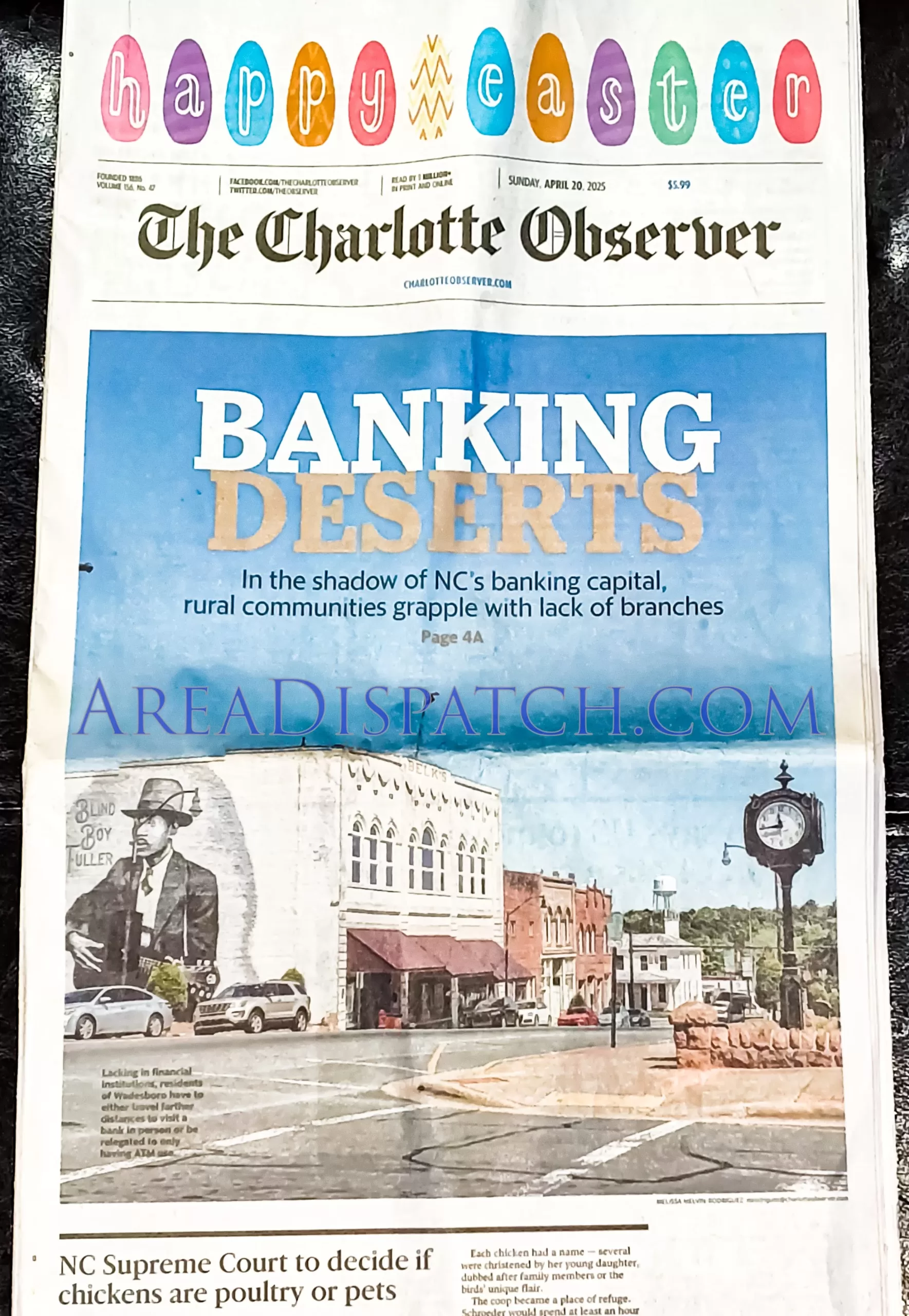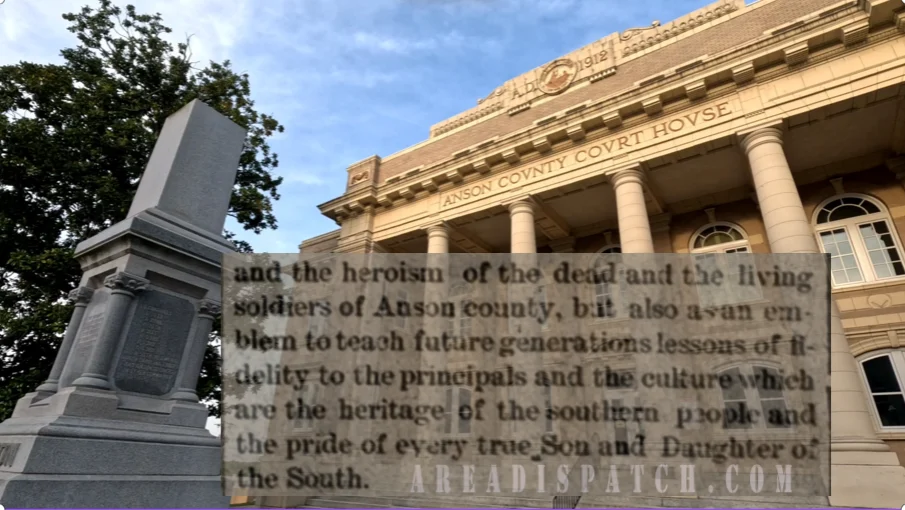From The Editor:
Oh, the irony…
Wadesboro, the seat of Anson County, was once known by a slightly different name. Wadesborough was curiously the name of the town pictured on this past Sunday’s Charlotte Observer cover. I say ‘curiously’ because the ‘ugh’ on the end defies efforts to be different from the Motherland. It’s why theater is spelled the way it is, and why the beautiful colors (not colours) on this Easter issue look the way they do. I still haven’t found a clear reason, aside from the appearance of loyalist sympathies, for the spelling.
Wadesborough was actually the banking capital of the antebellum South, and realistically it was probably the banking capital of the New World. They printed their own currency and stored valuables for the Bank of Fayetteville and Bank of Wilmington prior to the Civil War. This safe storage and . Several different books mention the banks in Charlotte taking their wealth down Lawyer’s Road to hide it from the US Army soldiers coming through Charlotte during the Civil War. Anson County is down Lawyer’s Road, that’s why it’s called Lawyer’s Road. Back when Mecklenburg, Rowan, and Anson made up a judicial district, the lawyers would stay on the road from Mecklenburg courthouse to Anson’s. The Anson County Courthouse is where Andrew Jackson obtained his license to practice law. He had studied under an attorney in Salisbury, and there was that judicial district thing. Salisbury is the seat of Rowan County. Wadesboro lost the British spelling shortly after the Civil War.
Reading all that about Anson being where the wealth was stashed, I wonder about Jesse James’ gold and if it ended up in Anson County. Andrew ‘Mome’ Diggs, an Anson County native, did ride with the Gang for a period of time. There are also many indications of money laundering throughout Anson’s history… and I wonder if it was actually Pinkerton agents who got Mome. You can’t tell me that the Pinkerton Agency, which had just created the first criminal database, would let someone who rode with the James Gang work on the railroads. It would suck if he was run over by a train while working for the railroad too. I think that’s the accepted narrative today. I wasn’t born at night and it definitely wasn’t yesterday. I have a feeling that they stole a lot of money from the railroads and maybe some gold.
Anson County provided the funding that has made Charlotte what it is today. William Alexander Smith, another Anson County native, funded the development of Myers Park and he was notably invested in the American Trust Company of Charlotte. You may not recognize this name because, through a series of mergers and acquisitions, it has been known as Bank of America since 1999. He was also significantly invested in Wachovia of Winston-Salem, and I assume you know who they are today. Am I an ass with you? Don’t make me look like an ass.

George Stephens also owned Stephens Company, which developed the Myers Park area of Charlotte using the funding
provided by William Alexander Smith. Stephens also owned the Charlotte Observer for a period of time.
James Buchanan Duke also owned an 11-acre estate in Myers Park called ‘White Oaks.’
Continued Below…

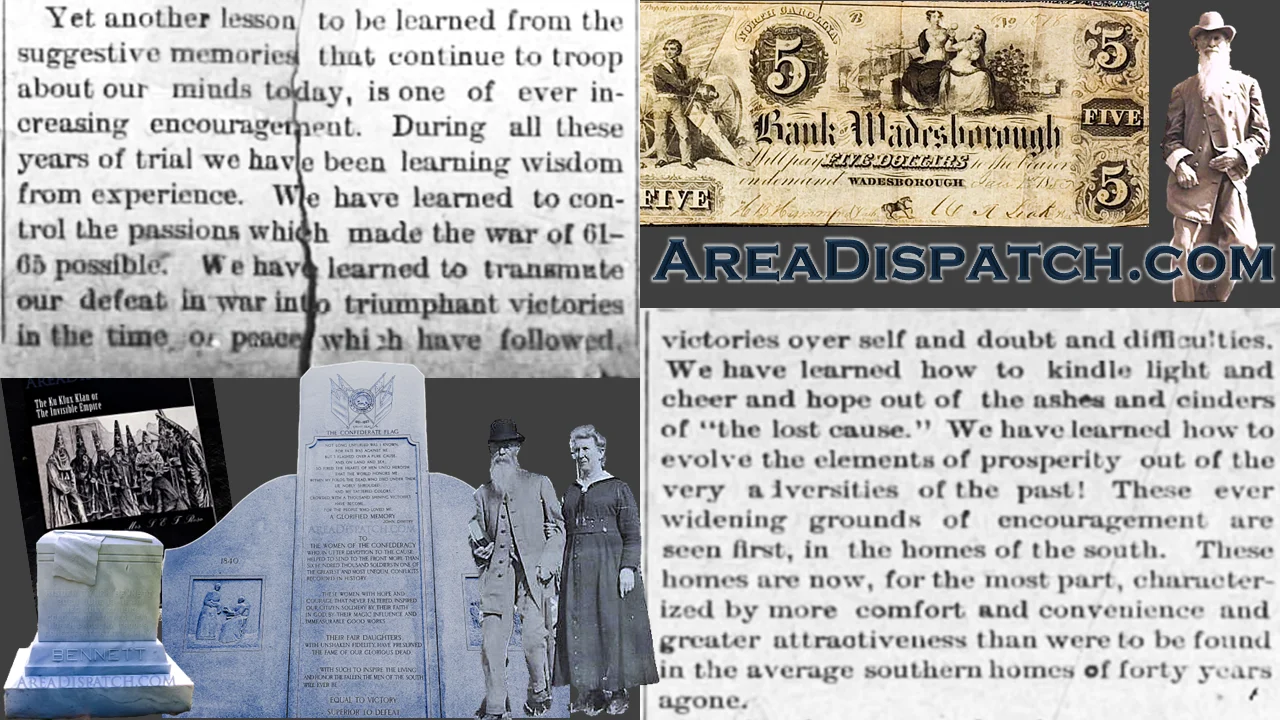
Excerpt is from the Messenger and Intelligencer article in the January 25, 1906 issue
covering the dedication ceremony of the Confederate Soldiers’ Memorial in Wadesboro.
Continued From Above:
It looks like the Bank of Wadesboro handled his will, but I’m not certain which entity ended up with the funds created by the will, but I have a guess. A trust created by the will has a Wilson address. BB&T was started in Wilson, and the First National Bank of Wadesboro, established 1894, acquired BB&T Financial FSB in 2013.
I’ve heard the William Alexander Smith Trust distributes money to various entities annually, and it should until at least 2033. Bennett was a smart dude, and it’s possibly a shame he died relatively young and shortly after William Alexander Smith’s death… But I digress.
You’ve known the First National Bank of Wadesboro by several names over the years because of those acquisitions I mentioned. You got BB&T already, I should bring up their acquisition of SunTrust in 2019, and today they are known as Truist.
What may have been William Alexander Smith’s ultimate objective might have actually been achieved.
It looks like the money laundering also moved up towards Charlotte more with the move of the banks that way. Oh yeah, there are indications of money laundering throughout Anson’s history. I’m looking for journals of General Kilpatrick that cover the period he was in command of Sherman’s army for their march from Savannah to Goldsboro. I’m curious about White Store and potential indications of an illicit trade. I have a hunch…
Does everyone know when the transatlantic slave trade was outlawed into the United States of America?
From The Bank of Wadesborough:
